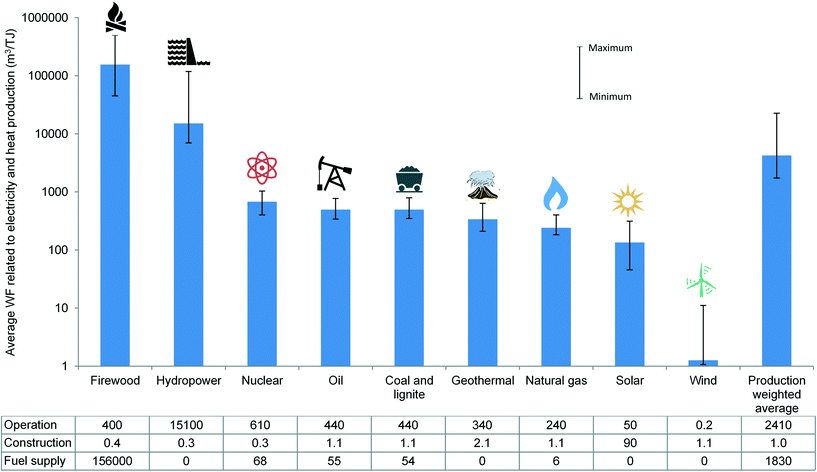
This article is a part of the essay series: World Water Day 2024: Water for Peace, Water for Life
A basic Google search on keywords such as “emerging technology” and “water conservation” would show thousands of articles describing how technologies such as Artificial Intelligence (AI), Big Data, blockchain and the Internet of Things (IoT) can support the sustainable management of water.
Literature would suggest that these technologies when deployed in water infrastructure management can help increase the efficiency of existing systems, and optimise water allocation and distribution to improve access to clean water.
A lot of this literature, however, remains silent on the effect of such technologies on the environment. The infrastructure required for the operation of these technologies requires land and massive amounts of energy and water utilisation and greenhouse gas emissions. The use of such technologies, thus, has the possibility of having a serious environmental or ecological footprint. Several indicators such as carbon footprint, energy footprint, nitrogen footprint, biodiversity footprint, and land footprint, have been developed over time to assess the environmental impact, however, the scope of this piece is limited to the water footprint of emerging technologies.
Calculating the water footprint of emerging technologies
Broadly defined, the water footprint of a good or service would be the measure of freshwater consumed in the process of its production. This includes both direct and indirect water usage and is measured by water volumes consumed and/or polluted per unit of time. Unlike traditional products and services, calculating the water footprint of emerging technology is a complex process that needs to consider several factors including water consumed during energy generation, water usage during the manufacture of components, and direct use of water during operations. This piece will use AI and cryptocurrency to illustrate the various components of the water footprint of emerging technologies.
Both AI and cryptocurrency require strong computing capacities that need massive amounts of energy for operation. This process of computing utilises water in three major ways—on-site water usage for cooling the system; off-site water usage at the time of electricity generation; and water usage during equipment manufacturing.
On-site water usage for cooling the system: Training and using AI and mining cryptocurrency are energy-intensive processes that result in the generation of a lot of heat during computation. This heat needs to be discharged away from the systems to prevent overheating and to ensure optimal performance. To prevent overheating, water is used to cool the system by discharging heat through cooling towers or outside air cooling.
Water usage at the time of electricity consumption: As the AI systems use massive amounts of energy to operate, the water consumption during the generation of electricity needs to be taken into consideration. The water consumed would depend on the mode of energy production. Figure 1 demonstrates the range of water footprints of different sources of electricity.

Figure 1: Average consumptive WF per unit of electricity and heat produced (m3 TJe−1) Source: Mesfin M. Mekonnen et. al., "The consumptive water footprint of electricity and heat: a global assessment"
Water usage during equipment manufacturing: The processors required for processing for AI as well as blockchain, are made of semiconductors, manufacturing which requires large amounts of ultra-pure water. The water footprint of the manufacturing of the components can be significantly high and was surveyed to be 7.89×108m3 in 2021.
Quantum of water used
Measuring the exact water footprint of these technologies is a bit difficult, as the water consumption would depend on the complexity of algorithms and the computing power required by the models. However, several researchers have attempted to calculate the footprint.
A paper by Sanaz Chamanara et. al. estimates that the water footprint of mining Bitcoins globally was about 1.65 km3 during 2020-21. Another study by Alex de Vries suggests that Bitcoin’s annual water footprint may equal 2,237 GL. These claims, however, have been contested.
A recent study by Pengfei Li et.al. estimates that the development and operation of GPT3 could consume around 5.4 million litres of water, including 700,000 litres of scope-1 on-site water usage for cooling. A study on the water footprint of digital services in Europe suggests that the yearly water consumption by such services might increase from 145.2 million cubic meters in 2020 to 546.7 million cubic meters by 2030.
Recommendations
It is to be noted that the existing literature on the water footprint of emerging technologies such as AI and cryptocurrency is sparse. While some research papers and reports claim huge numbers, the methodology for the calculation is often not clear. Thus, it is important to develop transparency mechanisms whereby at least the on-site water usage is reported publicly.
There is a need for further examination of the water footprint of emerging technologies as these technologies will continue to be further integrated into society. From the use of blockchain for smart contracts to the use of AI for accelerating the progress of the SDGs, these technologies offer huge benefits. However, before such implementation, it is important to have a holistic understanding of the effects of such technologies.
After all, using AI for smart water management would not make sense, if the water footprint of AI is larger than the water being saved.
Meanwhile, it is important that we keep energy and resource efficiency in mind while designing digital solutions. We need to optimise algorithms to reduce water footprint while finding more efficient alternatives for cooling that can reduce the amount of water being used in every stage of the process.
Basu Chandola is an Associate Fellow at the Observer Research Foundation.
The views expressed above belong to the author(s). ORF research and analyses now available on Telegram! Click here to access our curated content — blogs, longforms and interviews.




 PREV
PREV



